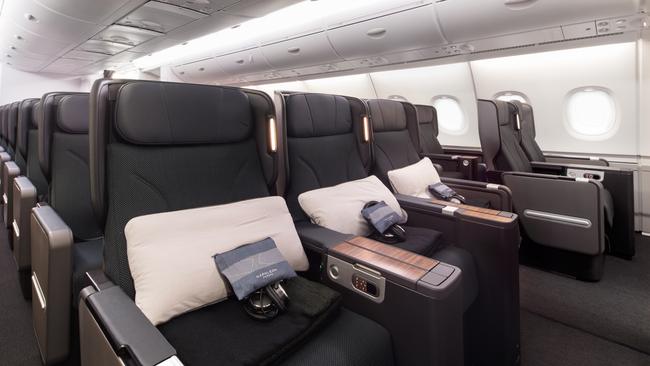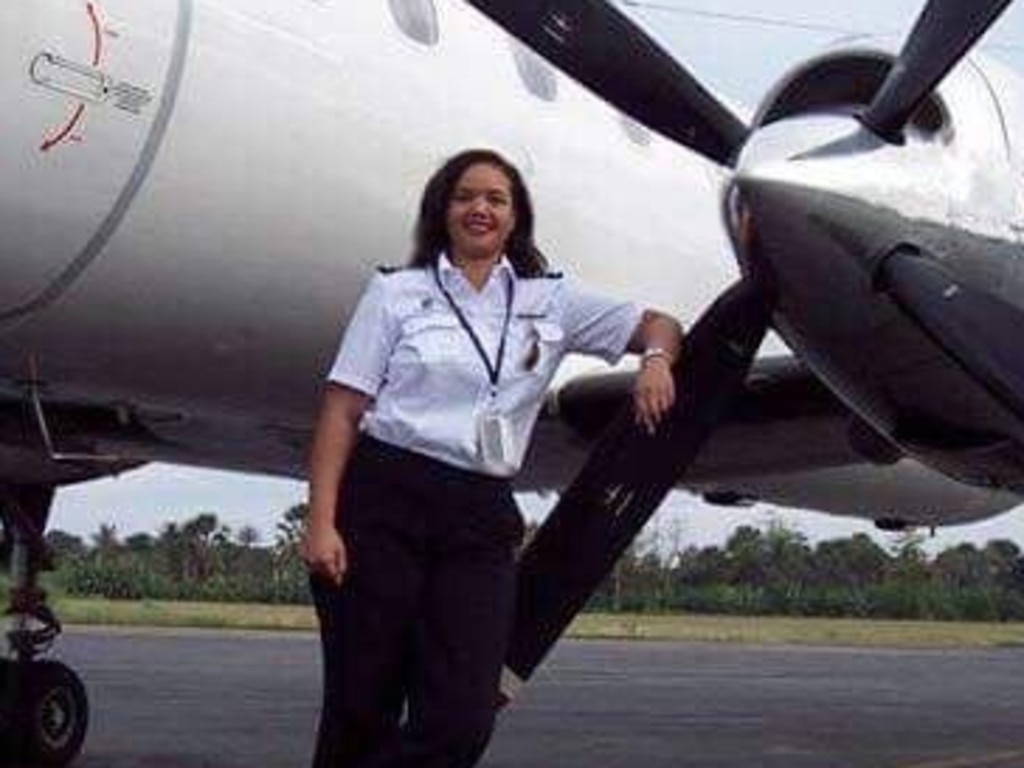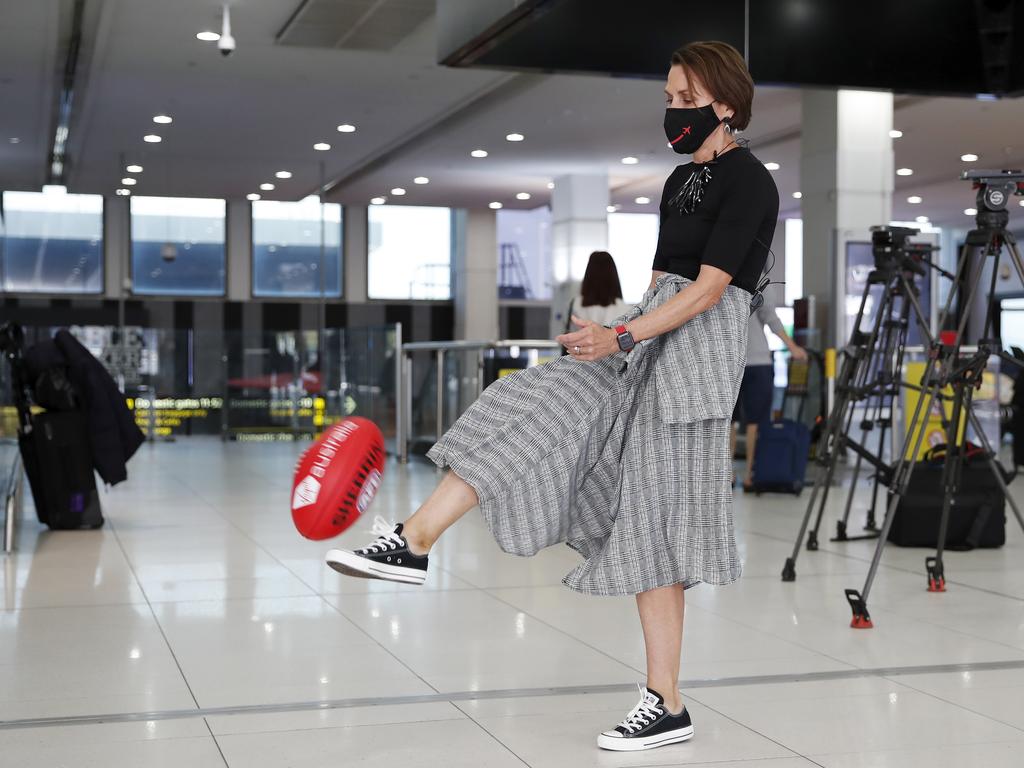Pilots tip Qantas A380s for early return
Qantas pilots says the superjumbos could be flying again sooner than expected as vaccinations fuel demand for international travel to resume.
Qantas A380 pilots are tipping the return of the superjumbos to occur sooner than planned as the global vaccination rollout gathers pace, and demand for international travel builds.
Airline boss Alan Joyce has repeatedly said the 12 A380s parked in the California desert were unlikely to return to service until late-2023, more than two years after the expected resumption of international travel in late October.
Of the 12, six have undergone multimillion-dollar cabin refurbishments including one that has never been flown commercially since undergoing reconfiguration.
Whether the remaining six will undergo the same makeover, Qantas will not say, but Mr Joyce has insisted the A380s will return to the skies to fly to slot restricted airports in London and LA.
Australian and International Pilots Association president Murray Butt, an A380 captain, was also optimistic the popular aircraft would fly again, as the only model in the Qantas fleet with a first class cabin.
“It would appear at this stage that 2023 might be a worst-case scenario for a return to service,” said Captain Butt.

“Australians have built up about $120bn in savings during the COVID crisis and there’s a lot of pent up demand for international travel. Once borders do reopen it will be interesting to see how quickly that moves.”
Whereas narrow body aircraft such as Boeing 737s can be “woken up” from storage in about a week, it takes 550-hours or more than three weeks, for an A380 to be readied for service.
Not that the double-decker aeroplanes are simply sitting idle in the desert, gathering dust.
Engineers stationed at the storage facilities have weekly, fortnightly and monthly checklists of tasks to run through for the enormous aircraft, including regular rotations of the 22 tyres, and the powering-up of the four engines.
Every opening on the A380 is covered to keep troublesome insects out, and other tasks are executed to ensure the aircraft are problem-free when they do fly again.
Maintaining pilot’s skills on the aircraft was just as important, and Captain Butt said they were awaiting details of the federal government’s recent aviation support package to clarify how critical training updates would be delivered.
He said Qantas would ensure skills were completely refreshed by the time the A380s returned to service, because there was too much at stake.
“The last thing they want is a loss of confidence on any other front after (the problems caused by) border closures,” Capt Butt said.
“They will ensure pilots are ready to operate at the level they would expect for Australian operations which have the best safety reputation in the world.”
Singapore Airlines was also gearing up for its A380s to fly again, continuing with a refurbishment program during the COVID crisis.
Although seven of the airline’s 19 A380s will be retired, the remaining 12 will all sport the new on-board product by mid-2023.
Singapore Airlines’ spokesman Karl Shubert said already nine had the latest configuration but it was unclear when passengers might again be able to experience the new look.
“We do not have any plans at this stage to return any of our A380 aircraft into commercial service, however we continue to monitor travel demand closely and remain nimble to ensure the right aircraft can be deployed to the appropriate route as required,” Mr Schubert said.








To join the conversation, please log in. Don't have an account? Register
Join the conversation, you are commenting as Logout